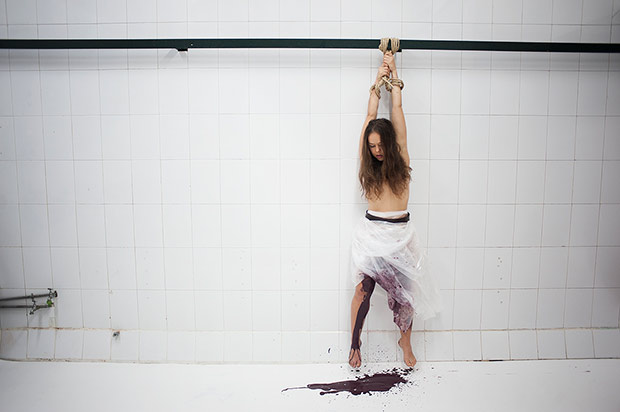
© Pablo Guidali. (Click image for larger version)
Rocío Molina
Fallen From Heaven
★★★★✰
London, Sadler’s Wells
9 July 2019
www.rociomolina.net
www.sadlerswells.com
One superb bailaora followed another in this edition of the Flamenco Festival but the contrast between them could not have been greater. The cool, sophisticated elegance of Sara Baras at the opposite end of the flamenco spectrum from the visceral, raw earthiness of Rocío Molina. The latter returning to London with Caido del Cielo (Fallen From Heaven), the show with which she won the National Dance Award for Best Female Modern performance when it appeared at The Barbican during Dance Umbrella 2017.
A lot has happened since then, not least that Molina gave birth in February, this year, at the time that the National Dance Awards Ceremony was taking place and it is remarkable that she is able to return to the stage in such an energy-sapping ninety minute work, just over four months later. On the evidence of this performance, that Award was thoroughly deserved.

© Simone Fratini. (Click image for larger version)
Any changes to the structure of her improvised performance were necessitated by a different venue, notably in the fact that Molina could run into the aisles at Sadler’s Wells, towards the end of the show, spitting grapes and trashing flowers, on her way. By this time the dancing had taken on a form of mania but hitherto it had been epitomised by controlled, disciplined footwork, sensuous, sinuous arms and swirling body movements.
Caido del Cielo is referenced as the celebration of being a woman, and it is certainly all about one woman. After an opening prelude of a pop-rock number by her excellent support band, it is – from then on – a masterclass in theatricality, with liberal doses of great dancing. Her opening solo inverts the flamenco norm. She wears a beautiful ivory-white bata de cola, a dress with a ruched train that bailaoras usually sweep around their legs, furling and unfurling the material as an integral part of the dance. Not for Molina: her dance is mostly horizontal, floor-based, often holding a pose as if she is literally falling from heaven, legs and arms raised and bent from a prone position on her back. In direct contrast to the raucous rock number that preceded her, she performs in silence and is barefoot. When this sequence finishes, the audience discovers that she is also naked underneath the dress, as it slowly peels off and drops to the floor; but her modesty is mostly preserved with lightning-quick arm movements, quickly covering both her breasts and groin; and with a little help from her musicians, she is reclothed in a dressing gown and then sportswear.
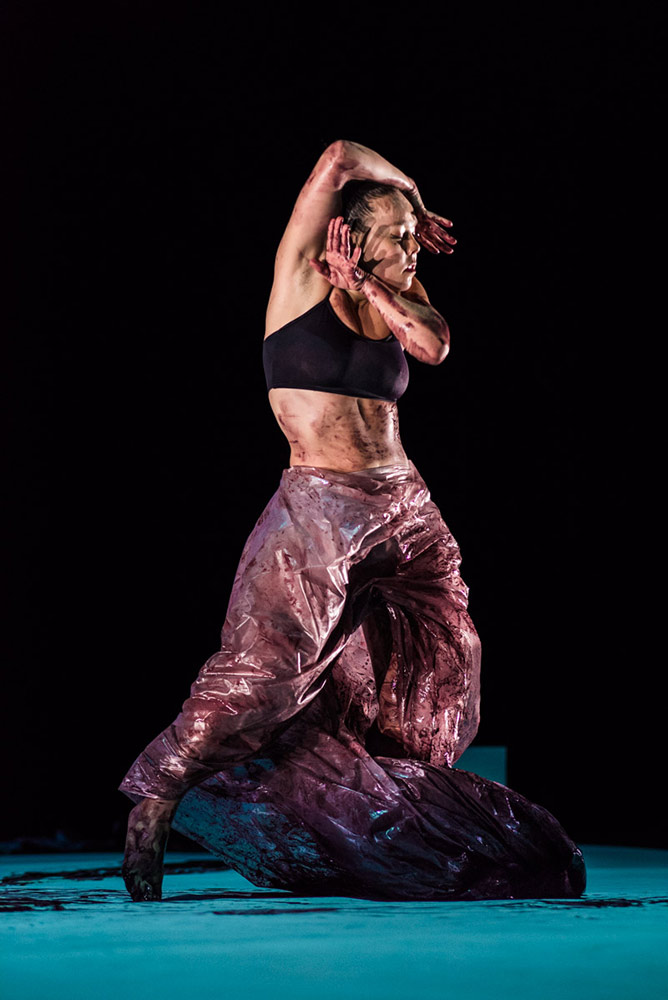
© Simone Fratini. (Click image for larger version)
There are many costume changes, invariably without the trouble of departing the stage. At one point she puts on a bondage outfit but, as she does so, her excellent guitarist (Eduardo Trassierra) starts to eat a packet of crisps. Soon the whole band joins in the group snack and Molina has a half-eaten bag of Walkers’ finest somehow attached to the front of her leather knickers, a handy aid to erotic picnicking and one worth remembering. By the end of this sequence, crushed crisps litter the floor but that is of no consequence in relation to what happens next. Still barefoot, now wearing a long dress, Molina steps into a container, which is full of red paint and then proceeds to create an abstract artwork, with the stage as the canvas and her body, the brush, all apparently filmed from above (although I have a suspicion that the film was not concurrent with the live action). When the artwork was finished, one of her musicians tenderly – and sensuously – bathed her feet from a bowl.
In these various sequences can be found many references to womanhood: vulnerability, eroticism, menstruation, creativity, ambition and romance just as a start. But, through all this one sensed the inherent core strength of a woman who gave her coruscating all on stage and then rushed off to be a mother. It is as if that latter necessity was yet another part of the show. I just pity the poor stage crew who had to clear up afterwards!













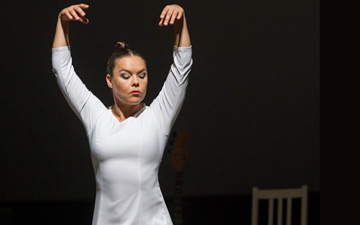
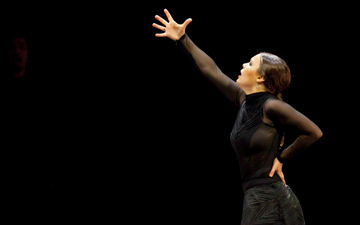
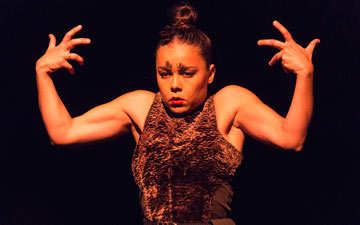
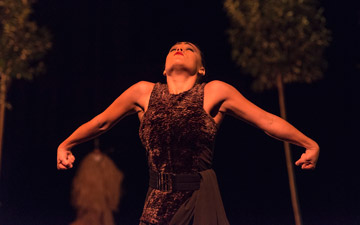
You must be logged in to post a comment.